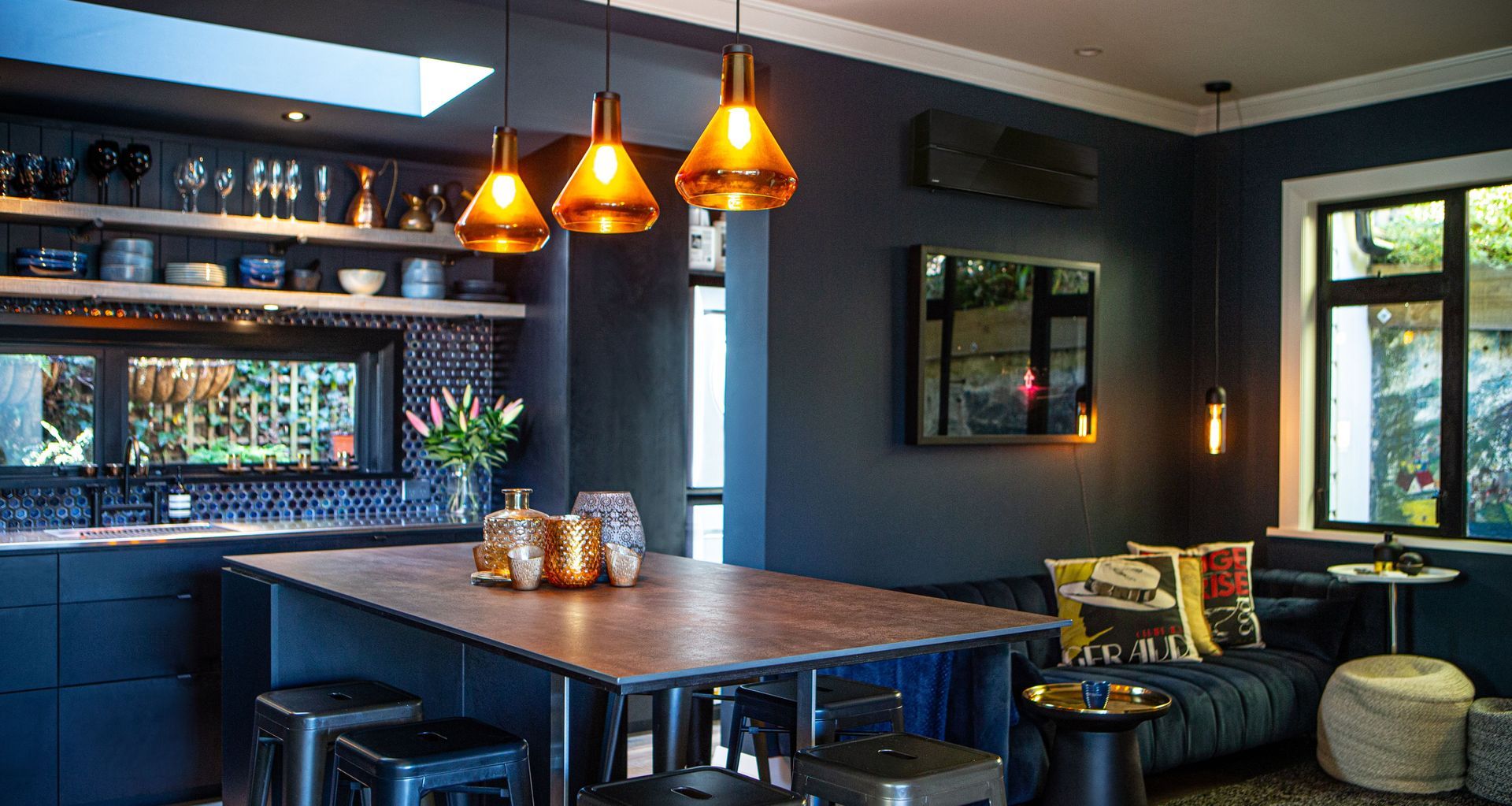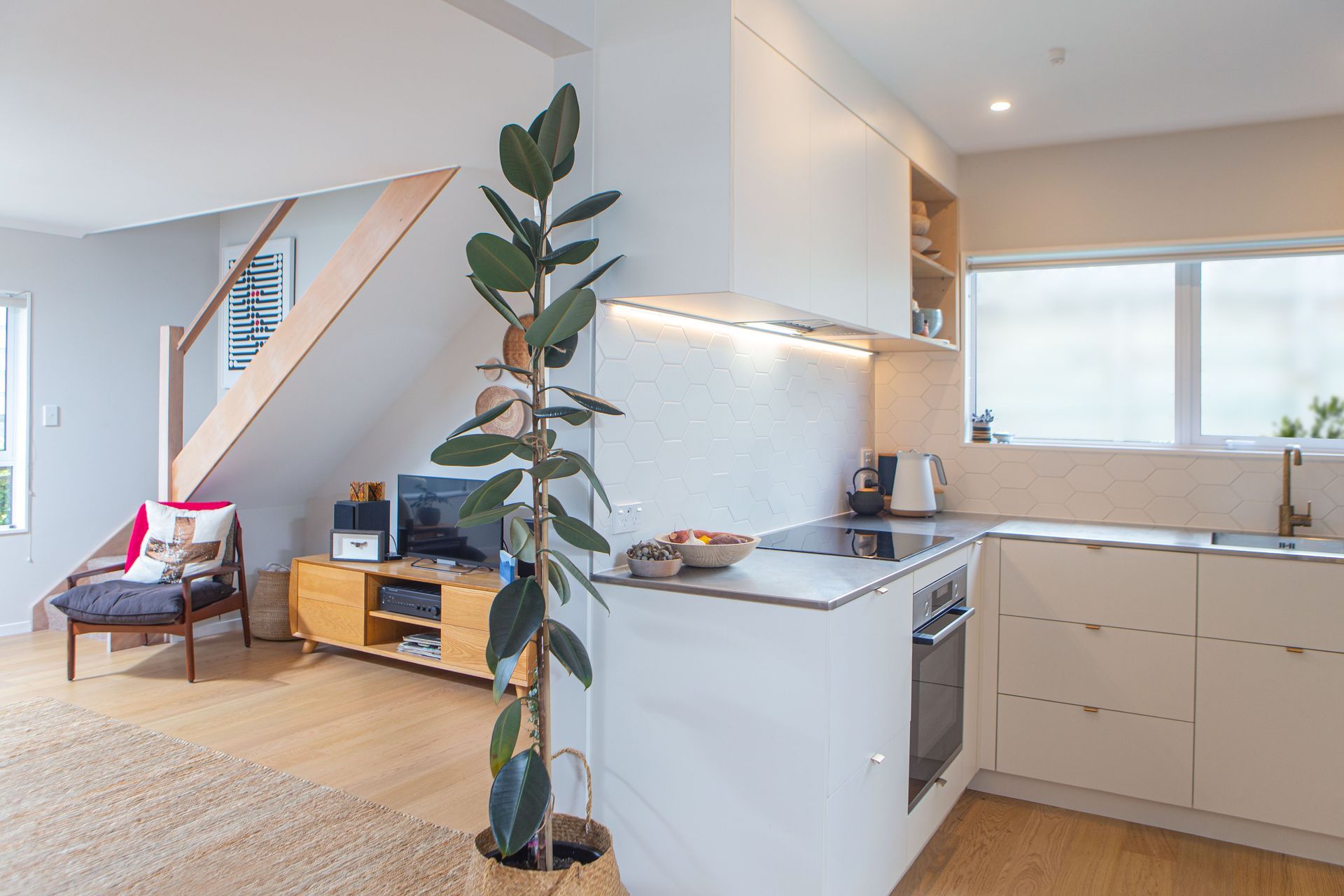Mitsubishi Electric: When heat pumps meet good design

The heating of our homes is a significant issue in the construction and architecture industry, a consideration of paramount importance — especially in the wake of multiple Building Code changes that pertain directly to this issue.
Every home construction or renovation project needs to keep a delicate balance between two often competing forces: form and function. A successful project will find the right equilibrium — and though many homeowners and designers may consider domestic heating as a purely functional enterprise, there’s a balance to be struck here as well.
Keeping us warm is one of the primary functions of a home, but that doesn’t mean our heating solutions can’t look good while doing it. Often, there’s little to no consideration for the placement of heat pumps in regards to the look and feel of a room — but Mitsubishi Electric and interior design company Hello Home Interiors are well aware of this oversight, and work hard to make sure it doesn’t happen in their construction or renovation projects.
ArchiPro sat down with Mitsubishi Electric’s Regional Sales Manager Emma Hutchinson, and Hello Home Interior’s Director/Designer Joneen Rodgers, to discuss the importance of aesthetics when it comes to indoor heating and how the Mitsubishi Electric range of heat pumps are designed with the modern New Zealand home in mind.
Whether it is the compact AP Mini for tight spaces such as bedrooms and home offices, the sleek and stylish Designer Series in three colour options, the advanced Black Diamond Series to combine aesthetic with function, or the recessible Floor Console that tucks away in transit spaces and offers fast, floor-level comfort.

Integrating heating and interior design early in the process
In many projects, the integration of heat pumps often happens near the end of the process, relegating the system to the ‘afterthought’ pile after everything else has been designed and implemented. To circumvent this problem, Emma suggests closer collaboration.
“We find that we achieve great outcomes when there’s a collaboration between the supplier of the heating system and the designer,” she says, “and especially if that relationship can be started quite early on in the process.”
Bringing in an interior designer to discuss the location of the unit, where control panels will be placed, or where vents can go to minimise visibility, ensures a better looking and feeling space.
Joneen says despite many people seeing these things as trivial or unavoidable, having them integrated into an interior design plan makes a huge difference.
“Often you may walk into a room and see a heat pump placed without consideration for overall alignment, artwork, architraves or even curtain railings!” says Joneen. “If you want your decor and furniture to reach their full potential in the space, everything in the room needs to be considered — and this includes heating units.
“You want your heat pump to be harmonious with the environment — it’s all about balance — in colour choice, placement and other design elements in the home.”
This all sounds great in theory, but how does it work in practice? How can such collaboration between multiple different stakeholders in the design and construction process work?

Collaboration and consultation
The answer: in-home consultations.
“Mitsubishi Electric has an authorised network of dealers offering free in-home consultations,” says Emma. “If it’s still early in the project, they can meet with interior designers and talk through your plans, to ensure that when it comes to installation it’s in a place that not only services your room best but looks great, too.”
As an interior designer, Joneen says this process is crucial, not only to align on design aspects, but to build relationships with all the different stakeholders.
“It’s not just between homeowners, designers and heat pump specifiers — it also involves the builders and other tradespeople,” says Joneen. “And if you build a good relationship with them through this initial collaboration, then often they’ll feel comfortable to ring you up when there’s a stud in the wall where the heat pump is meant to be installed, asking for your input — where previously they may have installed it 400 millimetres off-centre and skewed the whole room.”
Of course, it’s not just about placement of heating units — it’s also about how they look on face value. Hello Home Interiors designs based on the client’s desires, their personality and their lifestyle, and most importantly for longevity — and Mitsubishi Electric’s range marries well with such demands.
Emma says the aesthetic of the company’s heat pump units has been designed specifically to blend into environments that have been architecturally designed.
“Gone are the days of having a white heat pump as your only choice,” says Emma. “We offer several different colours in our Black Diamond LN Range and Designer EF Series — including a striking Red Diamond, Matte Silver and a Rich Black.
“Having a choice in the colour is a game-changer, especially when many people are experimenting with colour; they can match design elements such as black joinery; tie into décor accents and hardware; or blend into feature walls.”
Of course, this is all to say nothing of the feature-packed nature of Mitsubishi Electric’s heat pumps. In addition to working hard to integrate the units aesthetically into living spaces, the technology is cutting edge.
For example, the Mitsubishi Electric Black Diamond Series features advanced air filtration — a key consideration with indoor air quality now front of mind for many. It also offers Wi-Fi control so users can preheat or pre-cool a room from anywhere.
Joneen says these products have proven their mettle and have struck that all important balance between form and function.
“It’s good from our perspective to see a product that has been designed with functionality and comfort in mind, but then it’s also got a series of options that are aesthetically pleasing as well,” she says.
“It makes our job as interior designers easier when we don’t have to try so hard to hide it, because it looks good on its own merits.”
Learn more about Mitsubishi Electric and its offerings or book your free in home consultation.

